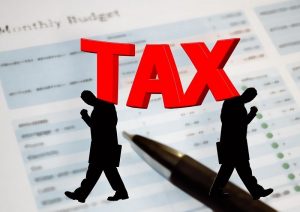Smaller NYC Condo Buildings Pay Lower Property Taxes (2024)
Go Back To Previous PageIs it true that smaller condo buildings pay lower taxes? An interesting aspect of New York City’s current property tax system is that homeowners in condominium and cooperative buildings with ten or fewer units pay lower property taxes than unit owners in buildings with 11 or more residential units. In other words, two similarly sized condos in the same New York City neighborhood, with similar market values, can have significant differences in property taxes solely because of the number of apartments in each building.
owners in buildings with 11 or more residential units. In other words, two similarly sized condos in the same New York City neighborhood, with similar market values, can have significant differences in property taxes solely because of the number of apartments in each building.
We have observed this phenomenon numerous times: two similarly sized pre-war condominium units have significantly different property tax bills. One property owner may pay thousands more taxes than another, even if both properties have almost the same square footage.
Sometimes, the unit with higher property tax rates may even be in a slightly less desirable location.
The NYC Department of Finance labels condo buildings as ‘Class 2’ properties. They use a similar method to calculate taxes. So, how can there be such a difference? We will go over the most frequently asked questions.
Class 2 buildings with ten or fewer units are eligible for a state law that limits average assessed value increases.
The maximum increase is 8% from the previous year or 30% over a five-year period. This is a huge tax benefit for real estate condo owners.
The assessed value of Class 2 buildings with more than ten units can increase without limit.
Changes in assessed value for condominium buildings with 11 or more units will occur gradually over five years. This balances changes over time, but it does not set a specific limit on growth rates. This differs from Class 2 buildings, which have ten or fewer units.
Under state law, the Department of Finance assesses all Class 2 properties based on potential income.
- Large condo buildings (11 or more units): The Department of Finance estimates a building’s income and expenses by comparing them to similar rental properties in terms of size, location, number of units, and age. Subsequently, they apply a capitalization rate to the building’s estimated net income to determine its market value.
- Small condo buildings (10 units or fewer): The Department of Finance estimates the typical income per square foot generated by comparable rental properties. Then, they calculate the total revenue for the building by multiplying the total income per square foot by the total square footage of the building. Lastly, the Department of Finance multiplies the building’s estimated income by a multiplier to determine its market value.
Multiply the property’s market value by 45% to determine the assessed value for property tax purposes.
- Note that the assessed value is subject to growth caps for buildings with ten units or fewer.
- For larger condominium buildings, the assessed value phases over five years.
The Department of Finance calculates property taxes by using the city’s tax rate on the market value. In other words, tax deductions are higher.
One- to three-family homes in NYC (Class 1 properties) have a limit on the amount of their value that can increase. This is like the rule for apartment buildings with more than ten condo units.
State law limits the assessed value increases for Class 1 properties to 6% per year or 20% over five years. These limits are stricter than the 8% and 30% limits for buildings with 11 or more units.
The assessed value growth cap on Class 1 properties is why townhouses in rapidly gentrifying parts of Brooklyn (such as Bed-Stuy and Bushwick) have significantly lower property values than similar properties in Manhattan.
New York City’s current property tax system provides more favorable tax treatment for townhouses than for condos and co-ops, so tax authorities established the Cooperative and Condominium Tax Abatement.
Conclusion: Smaller Condo Buildings Pay Lower Taxes in the Long Term
In short, New York City’s current property tax system is highly complex and filled with significant inequalities.
As authorities discuss property tax reform in upcoming tax years, we anticipate that the changes will be complex and significant. It may take years to implement, if it happens at all.


